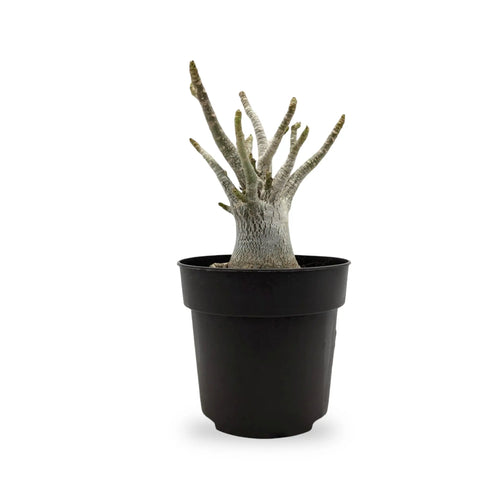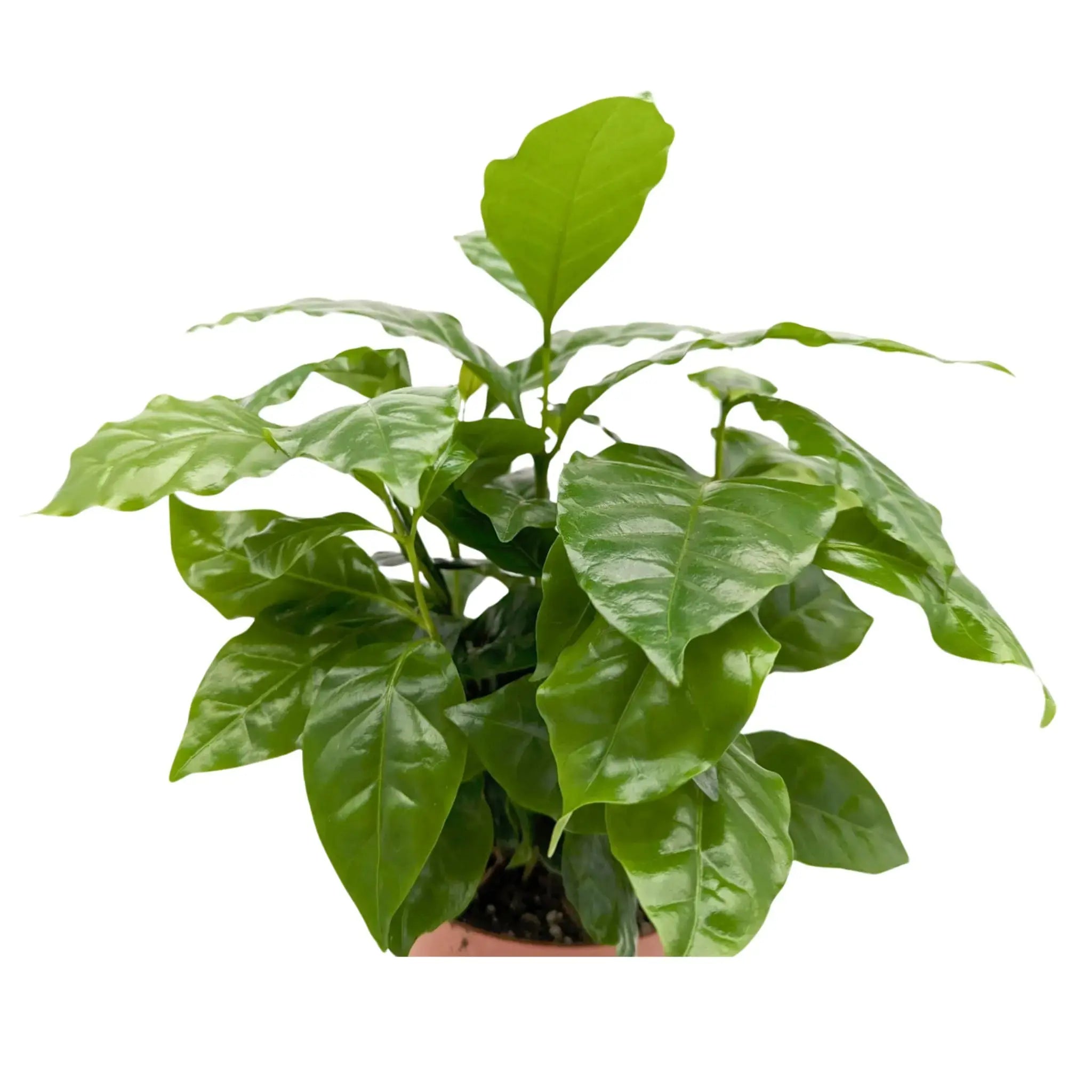Welcome to the ultimate guide on growing and enjoying the exquisite houseplant Coffee Arabica. Whether you're a seasoned plant enthusiast or a beginner looking to add a touch of elegance to your home, this article has got you covered.
With its lush, glossy leaves and delicate white flowers, Coffee Arabica is more than just a beautiful addition to your indoor garden. It also offers the unique opportunity to grow and harvest your own coffee beans, right in the comfort of your own home.
In this guide, we'll walk you through the step-by-step process of successfully cultivating and caring for Coffee Arabica. From choosing the right location and soil mix, to understanding the optimal watering and pruning techniques, you'll learn everything you need to know to ensure your plant thrives.
But it doesn't stop there. We'll also delve into the fascinating process of harvesting and roasting your own coffee beans, allowing you to savor the full experience of enjoying a cup of coffee you've cultivated with your own hands.
So, get ready to embark on an exciting journey into the world of Coffee Arabica and discover the satisfaction of growing and savoring your own homegrown coffee.
Coffee Arabica is not only a visually stunning houseplant but also provides the satisfaction of growing your own coffee beans. By cultivating Coffee Arabica at home, you can enjoy the process of nurturing a plant from seed to harvest and relish the reward of brewing your own cup of coffee. Additionally, having a Coffee Arabica plant in your living space can enhance the aesthetic appeal and create a soothing atmosphere with its lush foliage.
Growing Coffee Arabica indoors allows you to have a sustainable source of coffee beans right at your fingertips. By understanding the plant's care requirements and providing the ideal conditions, you can ensure a bountiful harvest of beans that are not only fresh but also free from harmful chemicals often found in commercially grown coffee. This homegrown alternative allows you to have full control over the cultivation process, resulting in a more personalized and rewarding coffee experience.
Moreover, nurturing a Coffee Arabica plant can be a therapeutic and rewarding hobby. The process of caring for a living organism, observing its growth, and eventually enjoying the fruits of your labor can bring a sense of fulfillment and joy. It provides a unique opportunity to connect with nature, even in an indoor setting, and can serve as a calming and meditative practice in today's fast-paced world.
Coffee Arabica, also known as Arabica coffee, is a species of Coffea that is widely cultivated for its high-quality coffee beans. Originating from the highlands of Ethiopia, Coffee Arabica is a tropical plant that thrives in warm temperatures and moderate light conditions. Its glossy, dark green leaves and fragrant white flowers make it a popular choice for indoor gardening enthusiasts looking to add a touch of elegance to their homes.
When grown as a houseplant, Coffee Arabica typically reaches a height of 4 to 6 feet, making it suitable for medium to large indoor spaces. The plant's growth habit is characterized by its upright stems and lush foliage, creating a striking visual appeal. In addition to its ornamental value, Coffee Arabica is prized for its ability to produce coffee beans that are favored for their smooth, mild flavor and low acidity, making them ideal for brewing a delicious cup of coffee.
Creating the optimal growing conditions is essential for the successful cultivation of Coffee Arabica. This plant thrives in a warm, humid environment with bright, indirect light. Ideally, place your Coffee Arabica near a window where it can receive filtered sunlight throughout the day. Avoid exposing the plant to direct sunlight, as this can lead to leaf burn and scorching.
In terms of temperature, Coffee Arabica prefers a range of 15-21°C during the day and slightly cooler temperatures at night. Avoid placing the plant near drafts or heaters, as extreme temperature fluctuations can stress the plant and hinder its growth. Maintaining a consistent temperature and humidity level is key to ensuring the health and vigor of your Coffee Arabica plant.
When it comes to humidity, Coffee Arabica benefits from moderate to high levels of moisture in the air. To increase humidity around the plant, you can place a humidifier nearby or use a pebble tray filled with water. Regular misting of the plant's leaves can also help create a humid microclimate, mimicking the plant's native tropical environment.
Selecting the appropriate pot and soil mix is crucial for the overall health and growth of your Coffee Arabica plant. When choosing a pot, opt for a container that provides good drainage to prevent waterlogging, which can lead to root rot. A pot with drainage holes at the bottom is ideal for allowing excess water to escape and ensuring proper aeration of the roots.
In terms of soil, Coffee Arabica thrives in a well-draining, slightly acidic mix that is rich in organic matter. A blend of peat moss, perlite, and vermiculite is recommended for creating a soil mix that retains moisture while allowing excess water to drain freely. Avoid using heavy or compacted soils, as they can lead to poor root development and waterlogged conditions.
When repotting your Coffee Arabica plant, choose a pot that is one size larger than its current container to allow room for root growth. Repotting is typically done every 1-2 years in the spring, as the plant outgrows its pot or the soil becomes depleted of nutrients. Be gentle when handling the plant during repotting to avoid damaging the roots and disturb the plant as little as possible to minimize stress.
Proper watering and fertilizing practices are essential for maintaining the health and vitality of your Coffee Arabica plant. When it comes to watering, aim to keep the soil consistently moist but not waterlogged. Allow the top inch of soil to dry out slightly between waterings to prevent overwatering, which can lead to root rot and other moisture-related issues.
To water your Coffee Arabica, thoroughly moisten the soil until water begins to drain from the bottom of the pot. Discard any excess water that accumulates in the saucer to prevent the roots from sitting in standing water, which can cause root rot. During the growing season, typically spring and summer, increase the frequency of watering to accommodate the plant's active growth.
In terms of fertilizing, Coffee Arabica benefits from regular applications of a balanced, water-soluble fertilizer formulated for houseplants. During the growing season, fertilize your plant every 4-6 weeks to provide it with essential nutrients for healthy growth and development. Reduce fertilization in the fall and winter when the plant enters a period of dormancy and requires less nutrients.
Pruning is an important aspect of caring for Coffee Arabica, as it helps maintain the plant's shape, promote new growth, and remove any diseased or damaged parts. When pruning your Coffee Arabica, use clean, sharp scissors or pruning shears to make clean cuts and avoid tearing the plant's tissue. Focus on removing dead or yellowing leaves, as well as any crowded or crossing branches to improve air circulation and light exposure.
To propagate your Coffee Arabica, you can use stem cuttings taken from the plant's healthy, mature growth. Select a cutting with at least two nodes and remove any lower leaves to expose the nodes. Dip the cut end in a rooting hormone to encourage root development and plant the cutting in a well-draining potting mix. Place the cutting in a warm, humid environment with indirect light and keep the soil consistently moist until roots develop.
Propagating Coffee Arabica through stem cuttings allows you to expand your plant collection or share the joy of growing this exquisite houseplant with friends and family. With proper care and attention, the cuttings will develop into healthy, mature plants that can be enjoyed for years to come.
Like any houseplant, Coffee Arabica is susceptible to certain pests and diseases that can affect its health and vitality. Common pests that may infest Coffee Arabica include spider mites, aphids, and mealybugs, which can cause damage to the plant's leaves and stems if left unchecked. To prevent pest infestations, regularly inspect your plant for any signs of insects and treat them promptly with insecticidal soap or neem oil.
In addition to pests, Coffee Arabica can also be prone to fungal diseases such as powdery mildew and root rot, especially in conditions of high humidity or overwatering. To prevent fungal infections, ensure good air circulation around the plant and avoid wetting the foliage when watering. If you notice any signs of fungal disease, such as white powdery spots on the leaves or mushy roots, take immediate action to treat the plant with fungicidal sprays or adjust your watering practices.
Maintaining good plant hygiene, such as removing fallen leaves and debris from the soil surface, can also help prevent the buildup of pests and diseases. Regularly inspecting your Coffee Arabica for any abnormalities and addressing them promptly can help keep your plant healthy and thriving for years to come.
One of the most rewarding aspects of growing Coffee Arabica at home is the opportunity to harvest and enjoy your own coffee beans. The process of harvesting coffee beans from your plant involves waiting for the berries to ripen to a deep red color, indicating that they are ready for picking. Harvest the ripe berries by hand, being careful not to damage the plant or the surrounding foliage.
Once you have harvested the coffee berries, the next step is to process and dry the beans before roasting. Start by removing the pulp from the berries to reveal the green coffee beans inside. Wash the beans thoroughly to remove any remaining pulp and then dry them in a well-ventilated area until they reach the desired moisture content.
Roasting your homegrown coffee beans is a crucial step in bringing out their full flavor and aroma. You can roast the beans in a home coffee roaster or even in a pan on the stovetop for a more hands-on experience. Experiment with different roasting profiles to achieve the desired roast level and flavor profile, whether you prefer a light, medium, or dark roast.
Once you have roasted your coffee beans, grind them to the desired consistency and brew a fresh cup of coffee to savor the fruits of your labor. Enjoy the rich, complex flavors and aromas of your homegrown coffee, knowing that every step of the process, from planting the seed to brewing the cup, was done with care and dedication.
In conclusion, growing and enjoying the exquisite houseplant Coffee Arabica is a rewarding and fulfilling experience that allows you to connect with nature, savor the fruits of your labor, and enjoy a truly unique coffee-drinking experience. By following the guidelines outlined in this ultimate guide, you can successfully cultivate and care for Coffee Arabica, from selecting the right pot and soil to harvesting and roasting your own coffee beans.
Embrace the journey of growing Coffee Arabica at home, relishing the beauty of its glossy leaves, the fragrance of its white flowers, and the satisfaction of enjoying a cup of coffee brewed from beans you've nurtured yourself. With dedication, attention to detail, and a passion for plants and coffee, you can embark on a fulfilling adventure into the world of Coffee Arabica and create a truly special oasis in your home. Cheers to growing and savoring the exquisite Coffee Arabica plant!










